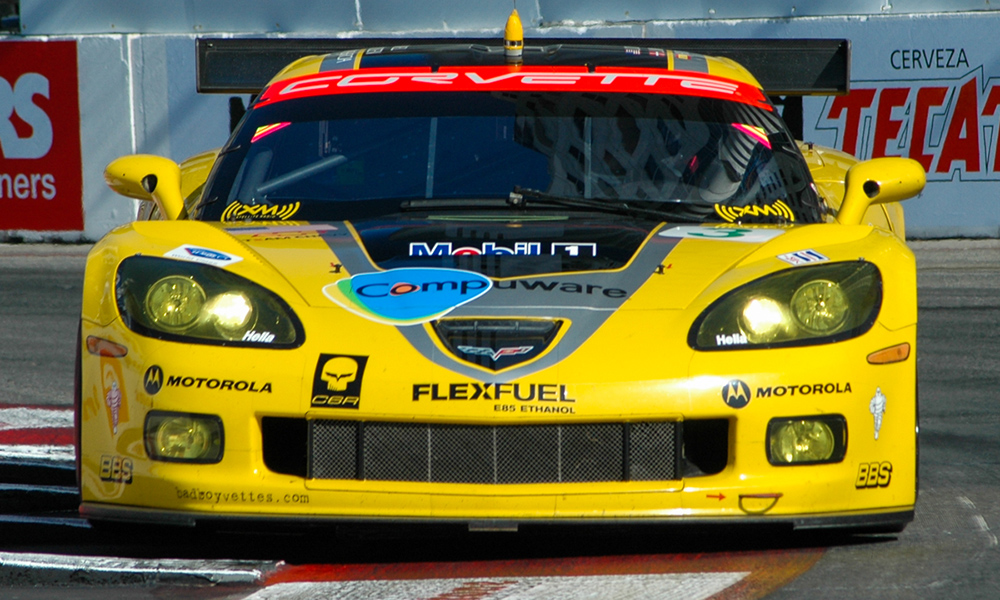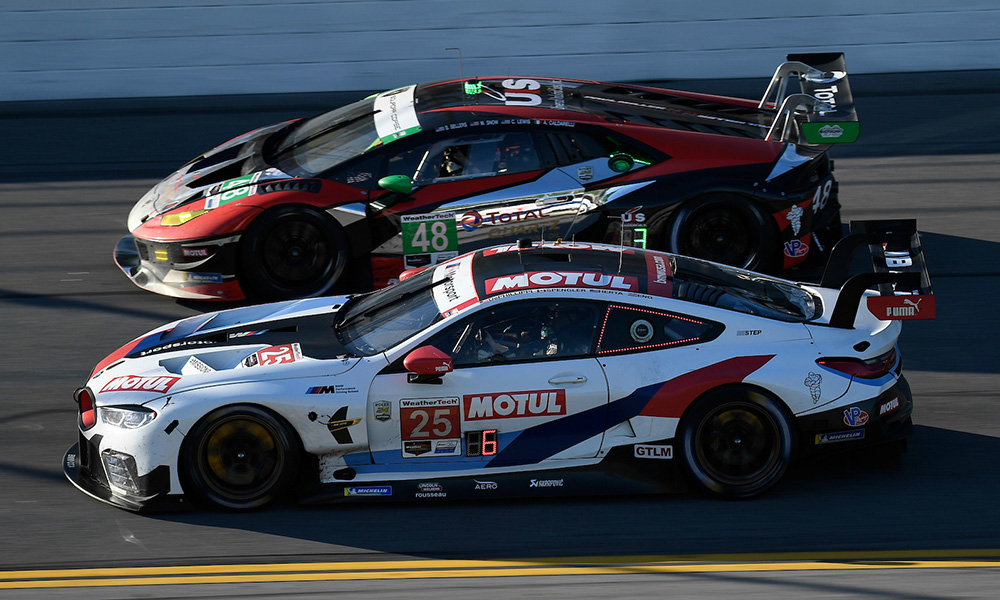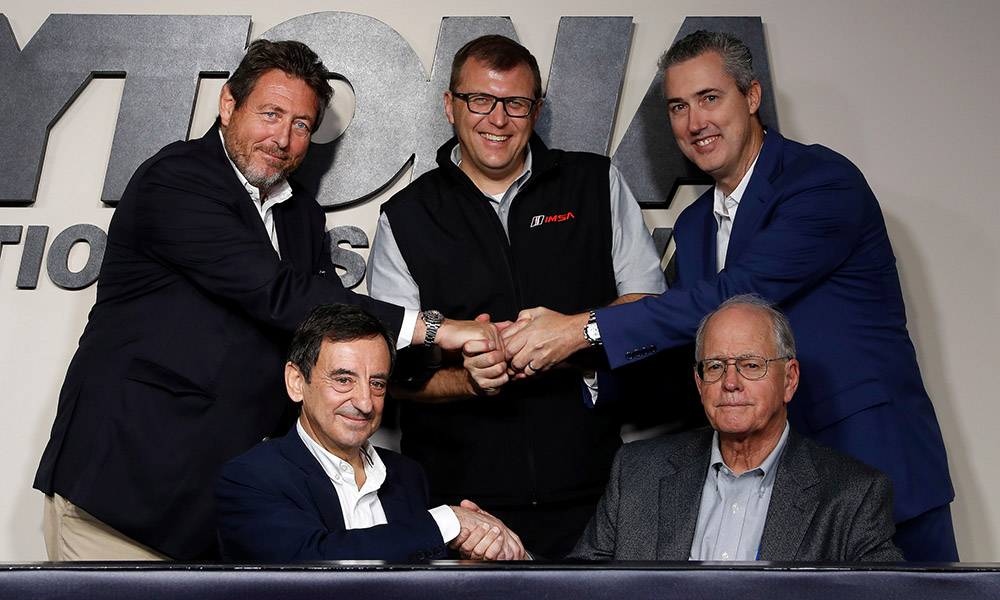
Photo: Michelin
Porsche’s unexpected but not completely surprising announcement that it would exit the GT Le Mans class of the IMSA WeatherTech SportsCar Championship at the end of the 2020 season sent shockwaves through the sports car racing community on Thursday.
While the German manufacturer’s withdrawal from factory GTLM competition comes as the first official causality of the coronavirus pandemic, it won’t be the last, and reason for IMSA and other sanctioning bodies to stand up, take note of the situation and respond to what’s likely to be a challenging road ahead for motorsports in general.
Part of that response, no matter the situation, is having the ability to adapt to the current economic climate.
DPi looks set to blossom into IMSA and the ACO’s new LMDh platform by as soon as 2022, while a new set of regulations are already due for LMP2 the following year and GT3 getting a refresh for 2022.
The GTLM class, however, faces an uncertain future, having lost half of its full-season grid in the matter of the last eight months.
Ford’s planned exit from the class after its four-year campaign with the mid-engined GT supercar at the end of last year resulted in a noticeable void in the paddock in January’s season-opening Rolex 24 at Daytona.
In seven months’ time, Porsche will join Ford on the sidelines in the class, potentially leaving just Corvette and BMW with full-season GTE-spec cars along with the occasional appearance from Ferrari privateer Risi Competizione.
Four to five cars in GTLM could be considered the best-case scenario, as BMW has yet to formally commit beyond the 2020 season with its M8 GTE platform.

Photo: John Dagys
2021: A Repeat of the Past?
What would be left if BMW decided to go in a different direction? It could be a repeat of the 2008 American Le Mans Series season, where Corvette ran virtually unopposed in the now-defunct GT1 class.
It wasn’t until the middle of 2009 when the factory Pratt & Miller-run squad joined the abundance of machinery in GT2, which at that time was the place to be for factory and privateer teams alike.
Fast-forward more than ten years and IMSA is facing a similar crossroads in having a potential crisis on its hands in the production-based ranks.
With no new content on the immediate horizon, aside from the slim chances of privateer Porsches, Ferraris or Aston Martin Vantage GTEs coming over from the WEC or European Le Mans Series, the time is now to reconsider the long-talked about GT convergence.
The concept of a single GT platform has been a hot topic of debate between manufacturers and sanctioning bodies for nearly the last decade.
It came close to materializing on at least two occasions, the most recent concept entailing a common GT3-style base platform with performance enhancements to the top, all-professional class to maintain distinct Pro and Pro-Am categories.
That proposal was ultimately shot down by several manufacturers but during a time when GTE was still well-subscribed with close to a half-dozen OEMs.
With two manufacturers remaining in IMSA and only three left in the FIA World Endurance Championship, should Porsche elect to continue in the globe-trotting championship next year, IMSA and the ACO need to take the proactive move to ensure healthy grids and not jeopardize potential additional OEM fallout.

Photo: Rick Dole/IMSA
What Would Convergence Look Like?
The concept is quite simple. Take the existing GT3 platform and utilize it for the Pro-Am GTD class and as a replacement to GTE-Am in the WEC and ELMS.
Slightly more powerful versions of the GT3 cars, adjusted through Balance of Performance, potentially on confidential tires, would then make up the GT3 ‘Plus’ category that would replace GTLM in the WeatherTech Championship and GTE-Pro in WEC.
It would not only open up the potential for GT3 manufacturers to enter with all-pro lineups and factory-supported cars, but also allow those manufacturers a ticket to the WEC and most importantly, the 24 Hours of Le Mans.
Audi, Lamborghini, Acura, Lexus, McLaren, Mercedes-AMG and Bentley are among those OEMs currently with GT3 cars only, while all of the existing GTE manufacturers, except for Corvette, have GT3-spec machinery in their arsenal.
And in Corvette’s situation, a brand-new car would’t have to be built, as Sportscar365 understands that its new GTE-spec C8.R can be easily converted to GT3 if needed.
Imagine the prospects of Corvette and BMW, potentially with its M6 GT3 for an interim year prior to the all-new M4 GT3 in 2022, going up against factory-supported efforts from Acura, Lexus, Lamborghini and others in IMSA’s all-pro GT3 class?
It would arguably make for a better show than what’s seen today in the class and also help clear space in the current GTD category for true gentlemen drivers paired with pro drivers, bringing the Pro-Am back into Pro-Am racing.

Photo: Mike Levitt/IMSA
ACO Adoption Key for Global Success
A number of questions, however, still remain, namely with the ACO on whether it could or would adopt a similar formula. But if it does, both the WeatherTech Championship and WEC could be running with identical class structures by 2022, which would only bolster further manufacturer involvement, even if it’s at reduced spending levels pre-virus.
GT3 cars are not foreign to ACO-run championship as it is, with the class currently being embraced in the Asian Le Mans Series, Michelin Le Mans Cup and up until recently, the ELMS.
The bottom line is that change needs to happen now in order to protect the future of sports car racing.
Unprecedented times call for unprecedented measures and convergence is likely to be the only immediate answer to the sport’s growing dilemma.
The views and opinions expressed on this web site are solely those of the original authors and other contributors. These views and opinions do not represent those of Sportscar365.com, John Dagys Media, LLC and/or any/all contributors to this site.

























